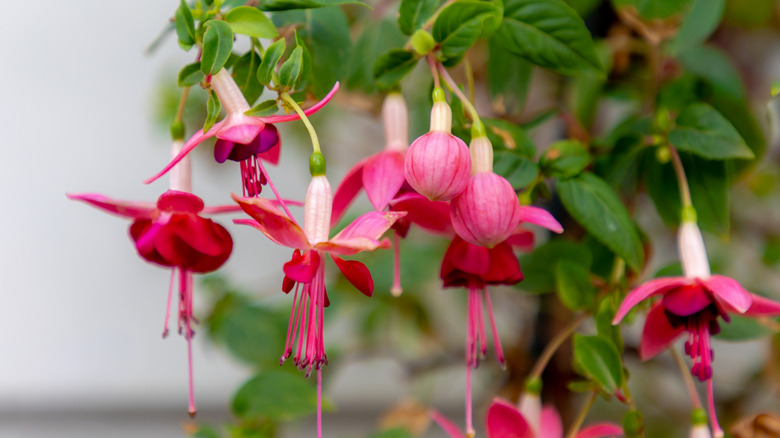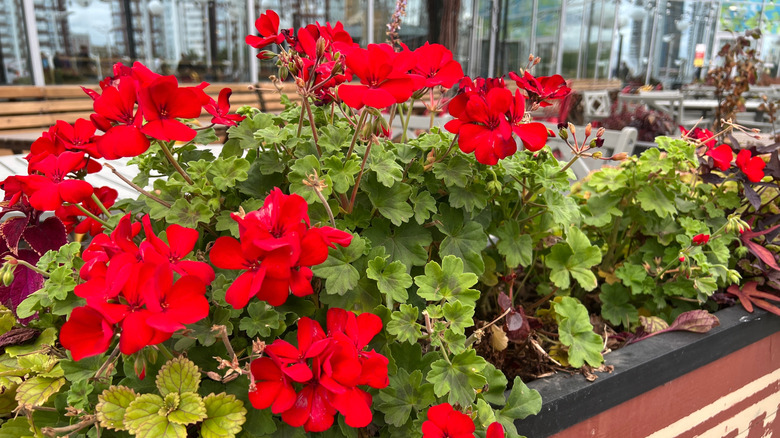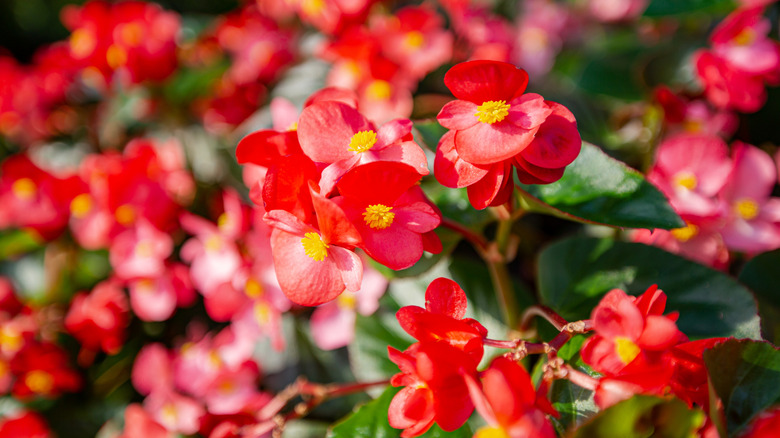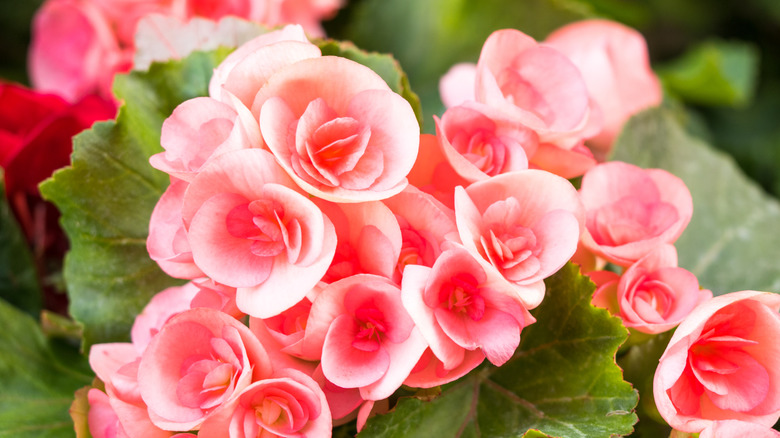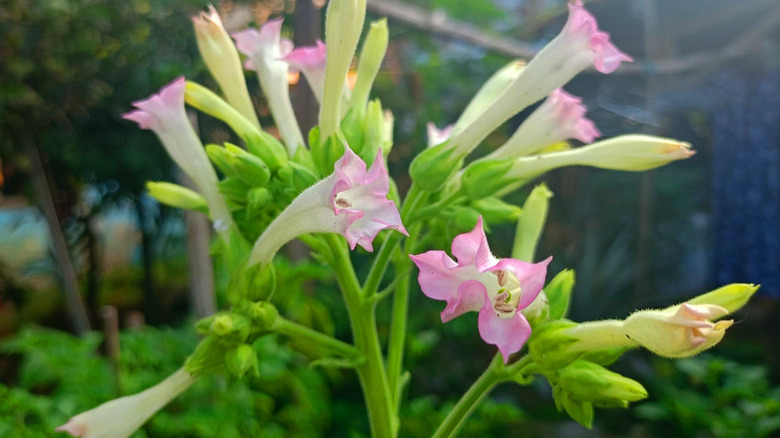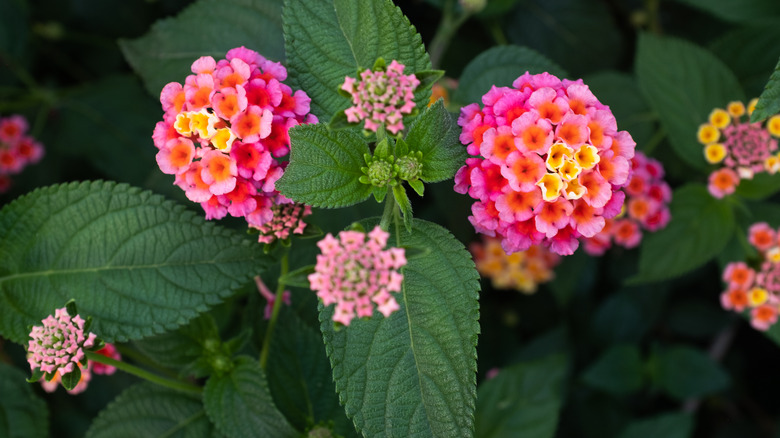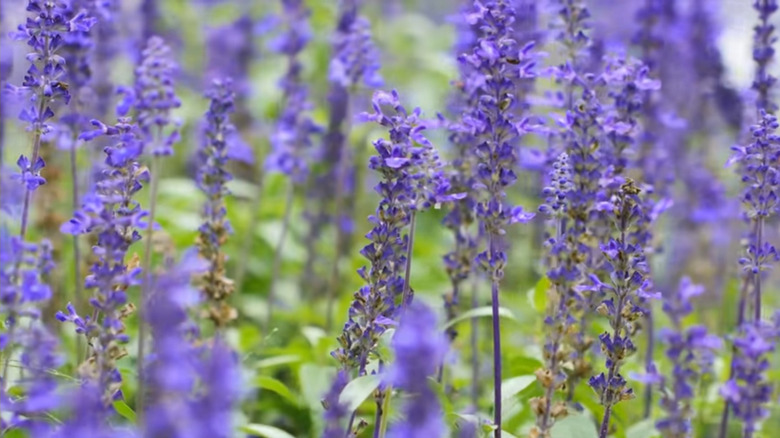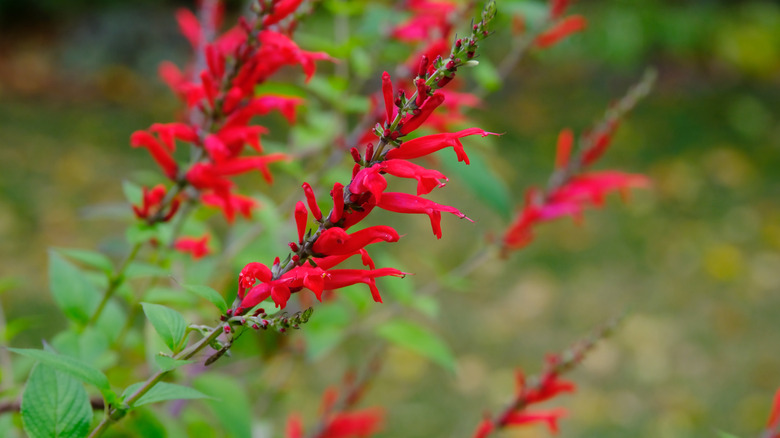10 Plants You Can Overwinter In Water To Plant For The Hummingbirds In Spring
Hummingbirds bring a whimsical buzz to your garden. When the flowers that attract them die off in the winter, it can be very disappointing. This happens not only to annual plants, but also to perennials planted outside of their USDA Hardiness Zones. This is where propagation comes in to solve that problem. By propagating your plants over the winter, you can grow brand new plants for your spring garden. It's a cheap and easy way to keep your yard full of flowers and hummingbirds year after year.
Flowers like lantana and wishbone flower are brightly colored and rich in nectar, perfect for making your yard a hummingbird hotspot. You'll notice that all of these plants bloom in shades of red, pink, blue, and purple. These colors are exactly what attract hummingbirds to your garden. They can be propagated from cuttings over the winter in soil or water, but using water has unique benefits. Oftentimes, roots grow more quickly in water than in soil. The best part is that you can watch them grow in real time. This is not only a fun way to watch your plant's progress, but it also allows you to monitor its health.
Fuchsia
The genus fuchsia, as the name suggests, is a group of fiery pink flowers. Hummingbirds are not only attracted to these flowers' color, but also their shape, which makes drinking nectar easier. Fuchsia is a perennial that's typically grown as an annual in colder climates. If this is the case for you, dropping temperatures don't mean you have to say goodbye. To propagate, cut about a 5-inch stem of new growth and remove the leaves on the bottom few inches. Place the stem in water. After about three weeks, you should have enough root growth to transplant into soil.
Geraniums
Geraniums (Pelargonium) can be annuals or perennials, depending on the variety and growing conditions. If you live in a colder climate, propagating your geraniums in water can help you enjoy them year after year. Cut a 4 to 6-inch stem with no buds or flowers at a 45-degree angle. Remove the lower leaves and submerge the stem in water. Stagnant water can lead to root rot, so you'll need to change it regularly. Once roots have formed, you're ready to transplant the cutting into a pot of soil. In the spring, you and the hummingbirds can enjoy vibrant blooms.
Wax begonias
Hummingbirds love wax begonias (Begonia semperflorens) because their nectar is especially high in sugar. These plants are only perennial in zones 9 to 11. If you live in a colder zone, you should make plans to overwinter them. If you choose to propagate them, cut a stem right below a leaf node. Remove the leaves from the bottom half of the stem and place it in water. You'll need to change the water every two to three days to prevent rot. After a few weeks, your cutting should be ready to transplant into soil.
Cardinal flower
Cardinal flower (Lobelia cardinalis) is aptly named — its attractive color and tubular flowers make it a crowd favorite among hummingbirds. It's also a perennial in zones 3 to 9, so it will likely survive the winter. However, it's is a small plant, only reaching 4 feet tall and 2 feet wide, so if you want to fill your garden, propagating is a cheap and easy way to do it. To propagate cardinal flower, cut a stem just below a leaf node. Remove any lower leaves, and place the cutting in water where it will receive bright, indirect light.
Wishbone flower
Beautiful wishbone flowers (Torenia fournieri) are dainty, trumpet-shaped annuals. While these plants remain hardy in hot and humid summers, they're not cut out to survive winter weather. Propagating wishbone flowers in water is an easy way around this issue. To propagate them, cut a stem at least 6 inches long. You should remove any leaves that would be submerged in the water, but, if possible, leave a leaf node at the bottom of the stem. Roots form easily from leaf nodes. Once a cluster of roots has formed, you can transplant the cutting into compost or potting soil.
Tuberous begonias
Unlike their wax counterparts, tuberous begonias are large and showy. This stunning variety of begonia flowers grows from a thick underground stem called a tuber. Tuberous begonias are only perennial in zones 9 to 11, so propagation is a great option. First, cut a 4 to 6-inch stem with at least two leaf nodes. Trim the lower leaves before placing the cutting in water. The glass should be kept warm but out of direct light, and the water should be changed every few days. After a few weeks, your cutting should have roots 1 to 2 inches long.
Tobacco flowers
Flowering tobacco (Nicotiana alata), also called jasmine tobacco, is beautifully fragrant and perfectly shaped for hummingbirds. These flowers open in the evenings, adding variety to your pollinator garden. Flowering tobacco is a heat-loving plant that's perennial in zones 10 and 11. To propagate them for endless plants, take a 4 to 6-inch cutting from a non-flowering shoot with at least two sets of leaves. Place the cutting in water and watch brand new roots grow.
Lantana
Blooming in multicolored bursts of pink, purple, orange, and yellow, lantana (Lantana camara) is distinct and unforgettable. These gorgeous colors are exactly what attract hummingbirds to your garden. Lantana is perennial in zones 7 to 11. To propagate your lantana, take a cutting with at least two leaf nodes. Remove all but the top set of leaves and place your stem in water where it can receive indirect sunlight. Be sure to change the water every two to three days. After about four weeks, you should see an inch of root growth. Then you can transplant the cutting.
Mealy cup sage
Mealy cup sage (Salvia farinacea) offers a break from red while still attracting buzzing hummingbirds to the garden. Its flowers are vibrant blue. This plant is perennial in zones 8 to 10. Mealy cup sage is easy to propagate in water, so you can enjoy it year after year. Take a cutting between 2 and 8 inches long and remove the lower leaves. Your cutting should have one bud and two leaf nodes. After a few weeks, you can expect to see new roots sprouting.
Pineapple sage
Blooming with clusters of red flowers that emit a scent similar to pineapple, pineapple sage (Salvia elegans) is a wonderfully unique plant. It blooms from late summer to early fall, offering hummingbirds a source of nectar after other plants have faded. Those living below zone 8 should try propagating pineapple sage in water to keep their gardens stocked. Take cuttings 4 to 6 inches long just below a leaf node. Place it in water and change it every day to every other day. When the roots grow to 1 to 2 inches long, you can transplant your cutting.

